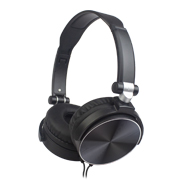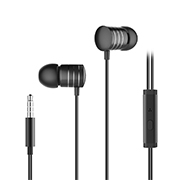
- factory address
D Building,Pioneer Park,3rd Industrial Zone Fenghuang Village, Fuyong Town,Baoan DistrictShenzhen,Guangdong,China
The effect of wire material on headphones - copper and silver
From me personally, I think that from the single material case, copper is more suitable for use as an audio and headphone cable than silver, because copper has a relatively balanced transmission capability for all signals in the audio signal range, so the performance of the copper wire is relatively balanced. And it sounds smoother, warmer and thicker. This is my personal favorite voice. Among the conductive properties of metals, silver is much better than gold, and the best conductivity in non-rare metals is silver. Therefore, as an acoustic wire for electrical signal transmission, silver seems to be a very suitable metal.
However, we also need to understand the conductive properties of the silver, which is that it has excellent transmission capability for high-frequency signals in the transmission of electrical signals, but it is not so good for the transmission of low- and medium-frequency signals. What is a high frequency signal? Let's spread it.
Let's take a look at the HZ (Hertz) parameter, which is the number of cycles per second. For example, the frequency of our national grid is 50HZ, which means that there are 50 periodic changes in the electrical signal per second.
Then the high-frequency signals that silver is good at transmitting are in units of M (1000Khz) or G (1000Mhz). The transmission range of our analog sound signal is generally 20HZ~20KHZ, and it is obvious that the transmission range that silver is good for is not yet achieved. The conclusion is that silver is not suitable for use as a cable for audio and headphones.
Very unexpected, I also think that the accident came too suddenly, but the fact may be true. So why are there so many so-called silver or silver-plated wires?
In fact, it is simple. Because of the characteristics of silver, it can effectively improve the high-frequency transmission capability. Although the sound signal does not reach the high-frequency range, at least the transmission of high-frequency signals is better than the low-frequency, which will cause sound. The high volume of the signal is more audible, and the details are more audible, because the detail signals are mostly present in the high frequency signal.
In the comparison of wire made of various materials, we will find that the details of the wire made of silver are the best, which in fact occupies the current sound industry to evaluate the development direction of the equipment.
Therefore, we often hear the kind of moving iron unit that is originally high and cold and then with the silver line. It is a smoldering sound. If it is good, it is a bit savage. It is a bit of a mystery. This is a matter of opinion. Things are gone, not much to explore in this post that only talks about materials.
Since silver does not have good anti-fatigue properties (that is, it is easy to be broken), the silver wires we all use are actually silver-plated wires, which look like silver. In fact, they are made of oxygen-free copper or single crystal copper. Composition. This has the added benefit of audio signal transmission, that is, due to the skin effect, the high frequency signal is transmitted from the surface layer with good transmission effect to the high frequency signal, and the medium and low frequency signal is transmitted by the copper therein. Can compensate for the transmission of some medium and low frequency signals in silver.
If you are really a detail control, choosing a silver line is understandable, but if you like the warm, smooth, heavy sound, don't choose this silver line.
Siding
Copper is the earliest metal that we humans have come into contact with, even earlier than iron, mainly due to the richness of minerals and the ease of access. The well-known master Wuding is a bronze, that is, copper-tin alloy. In the past, the weapons used by the soldiers were also composed of bronze. At that time, a country that mastered the smelting technology of copper was destined to be strong.
Pure copper
Copper with higher purity can be used in signal transmission. Copper is a good conductor of electrical signals. It is superior to gold for signal transmission, slightly worse than silver. But copper is not a precious metal like gold and silver, which is why copper is used in large quantities.
Oxygen free copper
The transmission of electrical signals in metal, part of the resistance is derived from the presence of oxygen, so the lower the oxygen content of the material, the better the transmission effect, so under the premise of technological progress, oxygen-free copper appears, generally The purity is above 99.999%, because it is always necessary to play more and more 9, for the sake of simplicity, so use N to indicate how many N there are 9, such as 6N copper wire, which is 99.9999%, of course Others say that there are 8N or 9N, there is no theoretical basis, because even if you have the ability to produce copper of theoretical purity, there is no equipment to measure such high purity. Oh, there are many things. It’s really embarrassing.
Single crystal copper
The pursuit of human beings is endless. Of course, the existence of oxygen-free copper cannot be tolerated. Therefore, the technical people have produced single crystal copper, which is a copper material composed of only one crystal made by continuous casting technology. A crystal can be stretched to more than one hundred meters. In this case, you have a 1.2 meter long headphone cable. If you use single crystal copper, the signal is transmitted only in the same crystal, eliminating the grain boundary blocking signal. This is undoubtedly the best state of signal transmission, because the signal will be blocked and will be attenuated through the grain boundary. Although this attenuation will be very subtle, who makes it a group of enthusiasts who pursue the ultimate? If you buy a single-crystal copper wire, you need to pay attention to it. This wire is directional, so make sure that the direction of the signal is the same as the direction of the arrow on the wire. Otherwise, it will affect the sound quality theoretically. of.
From the sense of hearing, this is also the case. The higher the purity of copper, the better its transmission capacity, and the sound is more transparent and delicate. This is definitely not metaphysics.



















